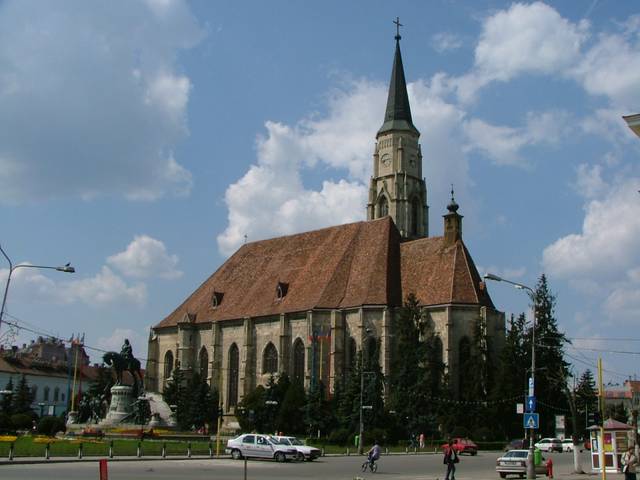 Cluj-Napoca (Romanian), Kolozsvár (Hungarian) or Klausenburg (German) is the capital of Cluj county and the unofficial capital of the historical region of Transylvania. The city, with about 320,000 people (2016), is very pleasant, and it is a great experience for those who want to see urban Transylvanian life at its best. Along with fine dining, excellent cultural activities, a wonderful historical legacy and a great atmosphere, the city will not disappoint those who add it to their travel itinerary. What's more is the fact that Cluj (as it's called for short) is so easy to access and get around.
Cluj-Napoca (Romanian), Kolozsvár (Hungarian) or Klausenburg (German) is the capital of Cluj county and the unofficial capital of the historical region of Transylvania. The city, with about 320,000 people (2016), is very pleasant, and it is a great experience for those who want to see urban Transylvanian life at its best. Along with fine dining, excellent cultural activities, a wonderful historical legacy and a great atmosphere, the city will not disappoint those who add it to their travel itinerary. What's more is the fact that Cluj (as it's called for short) is so easy to access and get around.
In Cluj-Napoca, the biggest ethnic group are Romanians. However, this was not a case as many different groups inhabited the city throughout the history. The first trace of life was neolithic settlements which were dating back thousands of years. Later the settlement was conquered and inhabited by Romans. The archaeological reminder of Roman Napoca can be seen in Unirii Square in the city centre. Saxons were next to occupy the city: they built the wall around the city which still stands. The city carries German name of Klausenburg. In the 19th century, ethnic Hungarians were the majority of the population and remained so until 1955. They call the city Kolozsvár. The construction of non-Catholic religious buildings in the city centre was forbidden for a while, yet eventually, Romanians were allowed to build Orthodox churches. During communist times, the remaining minorities migrated for a higher standard of living, for example, Jewish people migrated to Israel and ethnic Saxons migrated to Germany.
Cluj-Napoca has reminders of its past all around the city. You might wonder why Cluj-Napoca architecture is similar to that of in Germany. This happened during Austro-Hungarian period when local architects been educated in Vienna and returned back with similarish ideas. Moreover, communist buildings could be found just outside city centre.
Many people still refer to Cluj-Napoca to its previous name, Cluj, because the ending "Napoca" was added in 1974 by the Communist Party.
Cluj-Napoca has emerged as a tech hub being informally named as a silicon valley of Romania. Technology related events organised all around the city includes conferences attracting speakers from all around the world. Technology companies mainly offering out-sourcing services yet startups exist too. This continues to increase prices in the city which is high compared to other cities in Romania but still much cheaper than in Western Europe.
The official language is Romanian, a Romance language. Most educated people born after about 1970 will speak reasonably good English and will likely be proficient in one or more second Romance languages; most educated people born before about 1970 will speak reasonably good French and Italian. Hungarian is a common language, spoken by the relatively large Hungarian minority. The Roma people (Gypsies) speak their native Romany, as well as Romanian. Beyond that, as in any major city, there will be a smattering of other languages.
The area around the Union Square is a must see for the visitor, with the Teleki and Banffy Palaces (the latter now housing the National Art Museum), the Franciscan Monastery, the first Unitarian Church in the world, the Piarist Church, the Mirror Street (Iuliu Maniu Street - a unique architectural accomplishment dating back to the late 1800s) and Matthias Corvinus' place of birth, a 15th-century hotel now home to the Visual Arts Academy. Smaller streets around the Square can take you into splendid inner courts, old houses and isolated Churches.
- Union Square. Where you can find St. Michael's Church, the National Art Museum, the Statue of Matthias Corvinus and the roman ruins.
- The Museum Square. A 2-minute walk from the Union Square, is home to the Franciscan Monastery (a combination of Baroque and Gothic architecture dating back to the 14th century), the Transylvanian History Museum and the old Obelisk of the city, offered to the city as acknowledgement of its statute by the Austrian Emperor Franz Ferdinand in the 19th century. You can have a nice coffee right by the Obelisk, as during daytime the surrounding bars and cafes have outdoor seating.
- Eroilor Avenue. Is linking the two main squares - Union Square and Avram Iancu Square.
- Iuliu Maniu Street.
Union Square. Where you can find St. Michael's Church, the National Art Museum, the Statue of Matthias Corvinus and the roman ruins.
The Museum Square. A 2-minute walk from the Union Square, is home to the Franciscan Monastery (a combination of Baroque and Gothic architecture dating back to the 14th century), the Transylvanian History Museum and the old Obelisk of the city, offered to the city as acknowledgement of its statute by the Austrian Emperor Franz Ferdinand in the 19th century. You can have a nice coffee right by the Obelisk, as during daytime the surrounding bars and cafes have outdoor seating.
Eroilor Avenue. Is linking the two main squares - Union Square and Avram Iancu Square.
Iuliu Maniu Street.
- The Orthodox Cathedral.
- St. Michael's Church. This Gothic architecture piece is one of the most valuable in Transylvania. Its murals date from the 15th century, and the 50 m neogothic tower was built in 1860. The church is closed for renovation starting from 2018 that will take about 3 years.
- The Reformed Church. Built between 1486-1516, it is a very important piece of gothic architecture.
- The Franciscan Church. Built between 1260 and 1290.
- Calvaria Church. A small Benedictine abbey surrounded by defensive walls, Calvaria Church was built starting in the 9th-10th centuries.
- Bob Church. It is the first Greek-Catholic church that was built in the city of Cluj, while it was part of the Austrian Empire.
- Piarist Church. Completed in 1724, it was the province's first baroque church.
- Cock Church. Designed by the famous architect Kós Károly.
The Orthodox Cathedral.
St. Michael's Church. This Gothic architecture piece is one of the most valuable in Transylvania. Its murals date from the 15th century, and the 50 m neogothic tower was built in 1860. The church is closed for renovation starting from 2018 that will take about 3 years.
The Reformed Church. Built between 1486-1516, it is a very important piece of gothic architecture.
The Franciscan Church. Built between 1260 and 1290.
Calvaria Church. A small Benedictine abbey surrounded by defensive walls, Calvaria Church was built starting in the 9th-10th centuries.
Bob Church. It is the first Greek-Catholic church that was built in the city of Cluj, while it was part of the Austrian Empire.
Piarist Church. Completed in 1724, it was the province's first baroque church.
Cock Church. Designed by the famous architect Kós Károly.
- National Art Museum, Union Square nr. 30.
- National Museum of Transylvanian History, Str. Constantin Daicoviciu nr. 2.
- Emil Isac Memorial House, Emil Isac nr. 23
- Ethnographic Museum of Transylvania, Memorandumului nr. 21. 6 lei for adults. 25 lei for photos..
- Pharmaceutical Museum. Highlights of the museum include Mummy powder used as an expensive cure for all diseases, also the elixir of Love, dentifrice powders and medieval laboratory although little evidence exists that the room was used as a laboratory. A free audio guide is available through the mobile application "izi.Travel". 6 lei.
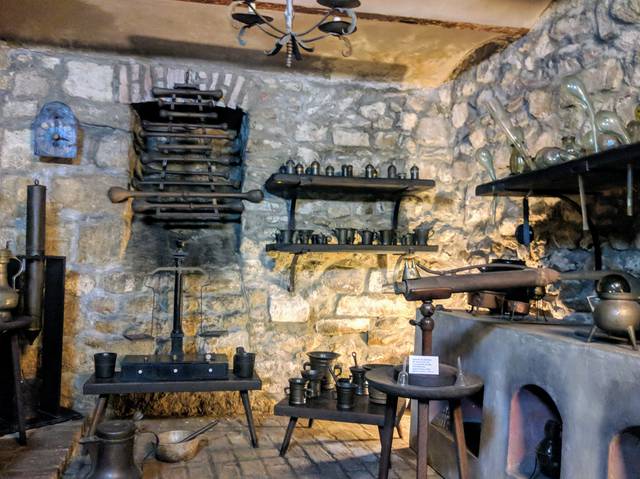
- Zoology Museum, Clinicilor nr. 5-7. Zoo museum. Variety of conservated reptiles and fishes includes horror-movie-like exhibition items like Amazon jungle snakes, ray, scorpions and lizards. Also stuffed wild mammals, crocodiles and turtles. The museum is found on university campus building on the ground floor on your left. If doors are closed, try knocking. The same building incorporates another live reptile exhibition downstairs. To visit it, take spiral stairs down from the lobby. Depending on the exhibition receptionist you might or might not pay a fee of 6 lei. 6 lei.
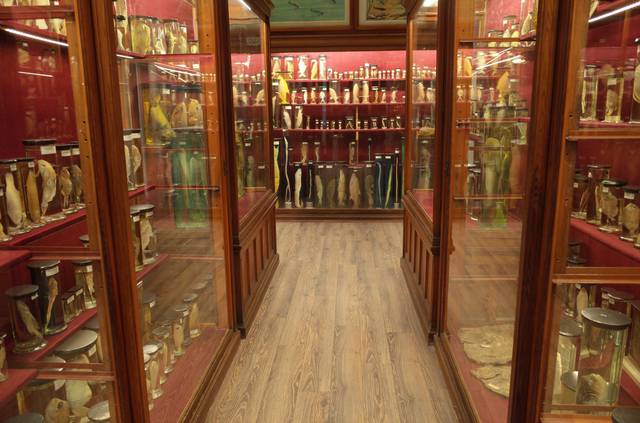
National Art Museum, Union Square nr. 30.
National Museum of Transylvanian History, Str. Constantin Daicoviciu nr. 2.
Emil Isac Memorial House, Emil Isac nr. 23
Ethnographic Museum of Transylvania, Memorandumului nr. 21. 6 lei for adults. 25 lei for photos..
Pharmaceutical Museum. Highlights of the museum include Mummy powder used as an expensive cure for all diseases, also the elixir of Love, dentifrice powders and medieval laboratory although little evidence exists that the room was used as a laboratory. A free audio guide is available through the mobile application "izi.Travel". 6 lei.
Zoology Museum, Clinicilor nr. 5-7. Zoo museum. Variety of conservated reptiles and fishes includes horror-movie-like exhibition items like Amazon jungle snakes, ray, scorpions and lizards. Also stuffed wild mammals, crocodiles and turtles. The museum is found on university campus building on the ground floor on your left. If doors are closed, try knocking. The same building incorporates another live reptile exhibition downstairs. To visit it, take spiral stairs down from the lobby. Depending on the exhibition receptionist you might or might not pay a fee of 6 lei. 6 lei.
- Fabrica de Pensule. Old paintbrush factory. Now the building is filled with art galleries and artists' studios.
- Galeria Arte, Str. Vasile Alecsandri nr. 1.
- Galeria Horeb, Str Târnavelor nr. 4. In the basement of what is probably the ugliest church in Cluj (it was built in 1984, during the very strict communist regime, so the church had to look like a communist apartment building), Galeria Horeb opened in 2009. It has around two exhibitions per year.
- IAGA.
- Lateral ArtSpace.
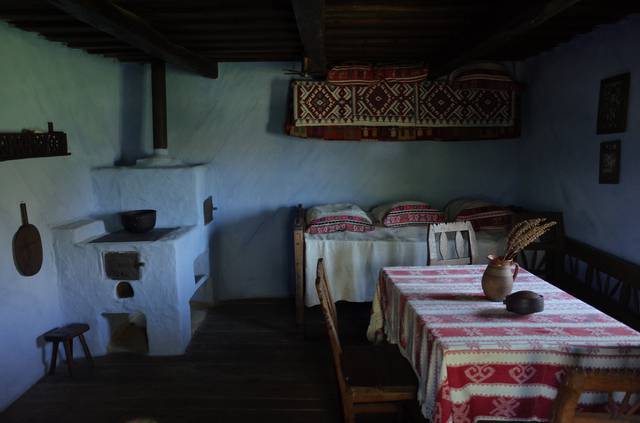 Plan B.
Plan B.
Fabrica de Pensule. Old paintbrush factory. Now the building is filled with art galleries and artists' studios.
Galeria Arte, Str. Vasile Alecsandri nr. 1.
Galeria Horeb, Str Târnavelor nr. 4. In the basement of what is probably the ugliest church in Cluj (it was built in 1984, during the very strict communist regime, so the church had to look like a communist apartment building), Galeria Horeb opened in 2009. It has around two exhibitions per year.
IAGA.
Lateral ArtSpace.
Plan B.
- The Central Park. A welcome break from the rush of the city. The middle of the park hosts a small lake and the Chios Casino, from the terrace of which you can rent rowboats and hydrobicycles to circle the small island in the centre of the lake.
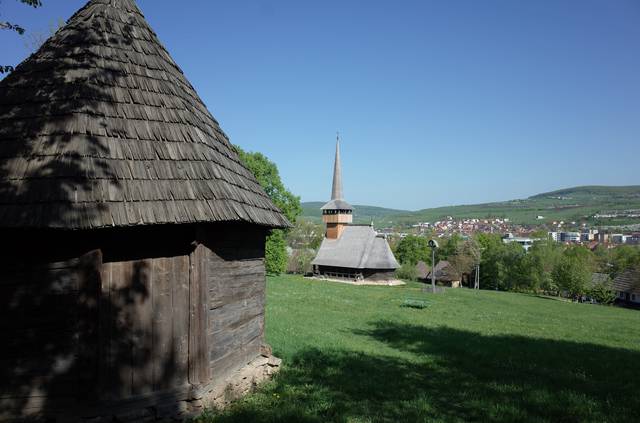
- "Romulus Vuia" Ethnographic Park, Tăietura Turcului (You can take the buses 26, 27, 28 from the train station. Mar-Oct: W-Su 10:00-18:00; Nov-Feb: 09:00-16:00. Displays village buildings in Transylvania region in 18 and 19 centuries in a 16-ha area park next to the city centre. Most are farmyards displaying a variety of used tools too. Highlights include high stretched cupolas churches with religions drawings within. Most buildings are closed but stalking through the windows are ok. Please allow one and a half hour for a visit. 6 lei adults, free for children. 5 lei for photography.
- The Fortress Hill. The Transylvania Hotel (also known to the locals as Belvedere) was built on top of the hill, and besides the great view offers a good restaurant as well. The hill can be climbed by stairs from the centre of the city. On the way you will also find a large iron cross monument. A walkway circles the crown of the hill just below the hotel, offering a nice view to the city. The fortress is a citadel-shaped earthen wall and an empty moat around the hotel area.

- Cluj-Napoca Botanical Garden, Strada Republicii 42 (south of the centre. Daily 08:00-20:00. 14 hectares, landscaped with varied configurations, suitable for growing and growing plants on different continents. There are about 10,000 specific categories grouped for better management in several sectors: ornamental, phytogeographical, systematic, economic, the greenhouse complex and the visually impaired sector. The Botanical Museum has about 7,000 exhibits, grouped in collections of scientific or economic importance, and phylogenetically in the evolutionary order from the plants with Simple organization (algae, moss, lichens, mushrooms), to complex ones (gimnosperme and angiosperms). Adult 20 lei, concessions 5 lei.
- Central Cemetery.
The Central Park. A welcome break from the rush of the city. The middle of the park hosts a small lake and the Chios Casino, from the terrace of which you can rent rowboats and hydrobicycles to circle the small island in the centre of the lake.
"Romulus Vuia" Ethnographic Park, Tăietura Turcului (You can take the buses 26, 27, 28 from the train station. Mar-Oct: W-Su 10:00-18:00; Nov-Feb: 09:00-16:00. Displays village buildings in Transylvania region in 18 and 19 centuries in a 16-ha area park next to the city centre. Most are farmyards displaying a variety of used tools too. Highlights include high stretched cupolas churches with religions drawings within. Most buildings are closed but stalking through the windows are ok. Please allow one and a half hour for a visit. 6 lei adults, free for children. 5 lei for photography.
The Fortress Hill. The Transylvania Hotel (also known to the locals as Belvedere) was built on top of the hill, and besides the great view offers a good restaurant as well. The hill can be climbed by stairs from the centre of the city. On the way you will also find a large iron cross monument. A walkway circles the crown of the hill just below the hotel, offering a nice view to the city. The fortress is a citadel-shaped earthen wall and an empty moat around the hotel area.
Cluj-Napoca Botanical Garden, Strada Republicii 42 (south of the centre. Daily 08:00-20:00. 14 hectares, landscaped with varied configurations, suitable for growing and growing plants on different continents. There are about 10,000 specific categories grouped for better management in several sectors: ornamental, phytogeographical, systematic, economic, the greenhouse complex and the visually impaired sector. The Botanical Museum has about 7,000 exhibits, grouped in collections of scientific or economic importance, and phylogenetically in the evolutionary order from the plants with Simple organization (algae, moss, lichens, mushrooms), to complex ones (gimnosperme and angiosperms). Adult 20 lei, concessions 5 lei.
Central Cemetery.
- The Tailors' Bastion. It is very well preserved, alongside with the corresponding section of the medieval wall
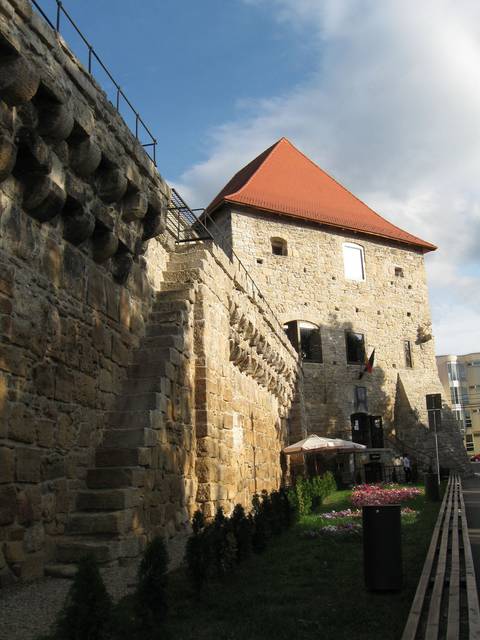
- Matthias Corvinus House.
- Palace of Justice, Calea Dorobantilor nr. 2
- Babeş-Bolyai University, Str. Mihail Kogălniceanu nr. 1B.
- Old Casino. Located in the Central Park, built at the end of the 19th century, restored in 2012.
- The City Hall.
- The Hintz House. Was the first pharmacy in Cluj. It houses the Pharmaceutical museum.
- Bánffy Palace. Built between 1774 and 1775, it houses the National Art Museum
- Cetățuia Fortress. Used to hold a stronghold, as its name implies. People were also jailed there. Not much of the old fortress remains, but the Fortress Hill is worth climbing, for the view.
The Tailors' Bastion. It is very well preserved, alongside with the corresponding section of the medieval wall
Matthias Corvinus House.
Palace of Justice, Calea Dorobantilor nr. 2
Babeş-Bolyai University, Str. Mihail Kogălniceanu nr. 1B.
Old Casino. Located in the Central Park, built at the end of the 19th century, restored in 2012.
The City Hall.
The Hintz House. Was the first pharmacy in Cluj. It houses the Pharmaceutical museum.
Bánffy Palace. Built between 1774 and 1775, it houses the National Art Museum
Cetățuia Fortress. Used to hold a stronghold, as its name implies. People were also jailed there. Not much of the old fortress remains, but the Fortress Hill is worth climbing, for the view.
- Statue of Matthias Corvinus. The statue is always climbed by tourists, although officially this practise is not allowed.
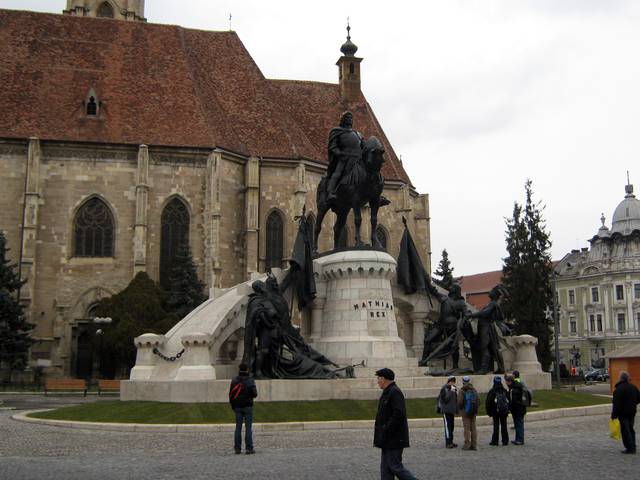
Statue of Matthias Corvinus. The statue is always climbed by tourists, although officially this practise is not allowed.
-BVpAT.medium.jpg)
- Someșu Rece fortress
- Cuzdrioara fortress
- Bologa fortress
- Gherla fortress
- Liteni fortress
- Gilău castle
- Bocskai castle in Aghireșu
- Banffy castles in Bonțida, Răscruci and Borșa
- Beldi castle in Geaca
- Haller castle in Coplean
- Kemeny Banffy castle in Luncani
- Kornis castle in Mănăstirea
- Teleki fortress in Luna de jos
- Beliș agrotouristic village with the Fântânele lake
- Lucian Blaga National Theatre.
- Romanian National Opera. Housed in the same building as the National Theatre
- Hungarian State Theater, Emil Isac nr. 26-28.
- Hungarian Opera. Housed in the same building as the Hungarian State Theater
- PUCK Puppet Theatre.
- Tranzit House. An old synagogue converted into an arts center.
- Reactor Independent Theatre, Str. Petofi Sandor nr. 4, +40 747197501. 9 lei for children shows, 10/12 lei or 15/20 lei for adult shows.
Lucian Blaga National Theatre.
Romanian National Opera. Housed in the same building as the National Theatre
Hungarian State Theater, Emil Isac nr. 26-28.
Hungarian Opera. Housed in the same building as the Hungarian State Theater
PUCK Puppet Theatre.
Tranzit House. An old synagogue converted into an arts center.
Reactor Independent Theatre, Str. Petofi Sandor nr. 4, +40 747197501. 9 lei for children shows, 10/12 lei or 15/20 lei for adult shows.
- Oser. Flea market held every Saturday from morning 'till noon.
- Anticariat Academic.
- Anticariat Röser, Strada Matei Corvin nr. 3.
Anticariat Academic.
Anticariat Röser, Strada Matei Corvin nr. 3.
You can also visit Sora Shopping Center, Central and Galeriile Ferdinand (very expensive). At a lower budget you can find lots of cool clothes in Piata Marasti (shopping center).
- Transylvania "The Land Beyond The Forest" Souvenir Gift & Design Shop, 22-26 Strada Regele Ferdinand ("Centrul Comercial Central", ground floor. You're lucky, this is probably the greatest souvenir shop in Romania and the official shop of the brand of Transylvania.
Iulius Mall.
Polus Center.
Transylvania "The Land Beyond The Forest" Souvenir Gift & Design Shop, 22-26 Strada Regele Ferdinand ("Centrul Comercial Central", ground floor. You're lucky, this is probably the greatest souvenir shop in Romania and the official shop of the brand of Transylvania.
Oser. Flea market held every Saturday from morning 'till noon.
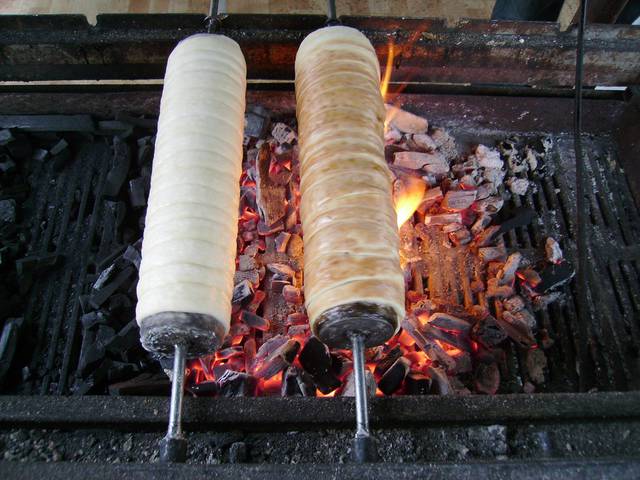
Cluj dining is some of the best in Romania. Ranging from traditional Romanian, Hungarian and Transylvanian (a combination of the previous two) to Italian (very good Italian food), Chinese, Japanese, Mexican, Middle Eastern, American and International Cuisine, the city can offer great dining for all tastes. Fancy restaurants are available as well as local fast food shops and a few international chains (McDonald's, Pizza Hut).
- Academia More - Pizzeria, Clinicilor st. 9A. Pizza & pasta, sports bar. Near University campus and downtown, with biggest summer garden in Cluj-Napoca (more than 400 seats). Pizza delivery also available: 0040-264-590823, 0040-745-983100. Big groups reservations.
- Agape. Cafeteria-style restaurant with good Hungarian and Romanian food.
- Elite Pizza. The oldest pizza place in town. Pizza delivery also available: 0040-264-597.
- Vărzărie. One of the few restaurants that Cluj had during the communist times. Today the food is pretty much unchanged and the place still maintains a bit of the old atmosphere. They serve simple and cheap Romanian food. Varză à la Cluj is a must try local specialty.
Academia More - Pizzeria, Clinicilor st. 9A. Pizza & pasta, sports bar. Near University campus and downtown, with biggest summer garden in Cluj-Napoca (more than 400 seats). Pizza delivery also available: 0040-264-590823, 0040-745-983100. Big groups reservations.
Agape. Cafeteria-style restaurant with good Hungarian and Romanian food.
Elite Pizza. The oldest pizza place in town. Pizza delivery also available: 0040-264-597.
Vărzărie. One of the few restaurants that Cluj had during the communist times. Today the food is pretty much unchanged and the place still maintains a bit of the old atmosphere. They serve simple and cheap Romanian food. Varză à la Cluj is a must try local specialty.
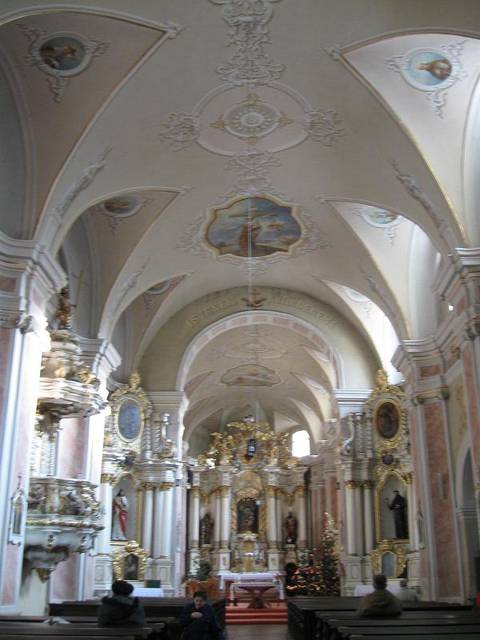
- Aroma. International cuisine with a great view
- Beijing, Str. A. Iancu nr. 12-14. Chinese eatery.
- Bistro Viena.
- Bolero - International.
- Bricks.
- Camino.
- Casa Ardelenească, Bd. 21 Decembrie 1989 no. 5 (in the Sora Shopping Center). Traditional Romanian menu, popular with the locals, and decorated with local art.
- Casa Vikingilor. International cuisine with huge portions.
- Chicago's - American fare.
- Ciuleandra, inside the Best Western Topaz Hotel. Specializing in Romanian/Transylvanian food.
- Club Italia.
- Don Mario - Mediterranean cuisine
- Fahid - Middle-eastern cuisine.
- Fair Play, Piața 14 Iulie. Well known for serving excellent tripe soup.
- Hao Yi - Chinese.
- Kaja Tanya.
- Klausen Burger. A restaurant & brewery with a view.
- La Piazzetta. A bit kitschy decor, but good pizza.
- Livada.
- Maestro - International.
- Maimuța Plângătoare. Traditional Romanian and Hungarian.
- Marco Polo, in the City Plaza Hotel. Japanese food.
- Marty Caffe, +40 264 591212. Str. Victor Babeş nr. 39. International.
- Mint Bistro.
- Pizzeria Michelangelo, +40 264 596969. Str. Memorandumului nr. 6. Romanian, Pizza Restaurant.
- Panoramic. International cuisine on the Cetatuia with a great view from above downtown.
- Pizza Y - International.
- Red House - Transylvanian/Hungarian.
- Roata. Romanian food. A place to try typical Romanian dishes. Menus have described a history of main dishes within few paragraphs and pictures. The restaurant might (or might not) serve homemade spirit on the house as a starter. Soups 12-17 lei. Mains 18-40 lei. Homemade spirit 50ml shot 10 lei.
- Samsara Foodhouse. Vegetarian, vegan, and raw vegan restaurant with a nice atmosphere.
- Shanghai, Calea Turzii nr. 42, +40 264 442027, +40 264 431444, +40 727-833 453. Located near a residential neighborhood a few kilometers from the city center, Shanghai has one of the most varied selections of Chinese dishes.
- Tokyo. Japanese.
- Twelve, str. Constanța 12.
- Vila Tușa.
Aroma. International cuisine with a great view
Beijing, Str. A. Iancu nr. 12-14. Chinese eatery.
Bistro Viena.
Bolero - International.
Bricks.
Camino.
Casa Ardelenească, Bd. 21 Decembrie 1989 no. 5 (in the Sora Shopping Center). Traditional Romanian menu, popular with the locals, and decorated with local art.
Casa Vikingilor. International cuisine with huge portions.
Chicago's - American fare.
Ciuleandra, inside the Best Western Topaz Hotel. Specializing in Romanian/Transylvanian food.
Club Italia.
Don Mario - Mediterranean cuisine
Fahid - Middle-eastern cuisine.
Fair Play, Piața 14 Iulie. Well known for serving excellent tripe soup.
Hao Yi - Chinese.
Kaja Tanya.
Klausen Burger. A restaurant & brewery with a view.
La Piazzetta. A bit kitschy decor, but good pizza.
Livada.
Maestro - International.
Maimuța Plângătoare. Traditional Romanian and Hungarian.
Marco Polo, in the City Plaza Hotel. Japanese food.
Marty Caffe, +40 264 591212. Str. Victor Babeş nr. 39. International.
Mint Bistro.
Pizzeria Michelangelo, +40 264 596969. Str. Memorandumului nr. 6. Romanian, Pizza Restaurant.
Panoramic. International cuisine on the Cetatuia with a great view from above downtown.
Pizza Y - International.
Red House - Transylvanian/Hungarian.
Roata. Romanian food. A place to try typical Romanian dishes. Menus have described a history of main dishes within few paragraphs and pictures. The restaurant might (or might not) serve homemade spirit on the house as a starter. Soups 12-17 lei. Mains 18-40 lei. Homemade spirit 50ml shot 10 lei.
Samsara Foodhouse. Vegetarian, vegan, and raw vegan restaurant with a nice atmosphere.
Shanghai, Calea Turzii nr. 42, +40 264 442027, +40 264 431444, +40 727-833 453. Located near a residential neighborhood a few kilometers from the city center, Shanghai has one of the most varied selections of Chinese dishes.
Tokyo. Japanese.
Twelve, str. Constanța 12.
Vila Tușa.
- Baracca, Str. Napoca nr. 8A, +40 732 155177. Very good Mediterranean food with French cuisine influence, great atmosphere. This restaurant changes its menu every 6 months, in collaboration with a chef from France.
- Casa Boema.
- El Toro Steakhouse. Argentinian steakhouse
- Fragment.
- Matei Corvin Intim, +40 264 597497. Str. Matei Corvin nr. 3. International cuisine. This restaurant frequently receives national and international celebrities.
- Topaz, +40 264 414066. Str. Septimiu Albini no. 10 (inside the Best Western Topaz). Refined menu of international selections in an elegant atmosphere.
- Via. Located in a wonderfully restored old house.
- Zama, Strada Napica, nr. 16 (two blocks west of Piata Unirii. Modern restaurant serving traditional Transylvanian cuisine. Mains 20-40 lei.
Baracca, Str. Napoca nr. 8A, +40 732 155177. Very good Mediterranean food with French cuisine influence, great atmosphere. This restaurant changes its menu every 6 months, in collaboration with a chef from France.
Casa Boema.
El Toro Steakhouse. Argentinian steakhouse
Fragment.
Matei Corvin Intim, +40 264 597497. Str. Matei Corvin nr. 3. International cuisine. This restaurant frequently receives national and international celebrities.
Topaz, +40 264 414066. Str. Septimiu Albini no. 10 (inside the Best Western Topaz). Refined menu of international selections in an elegant atmosphere.
Via. Located in a wonderfully restored old house.
Zama, Strada Napica, nr. 16 (two blocks west of Piata Unirii. Modern restaurant serving traditional Transylvanian cuisine. Mains 20-40 lei.
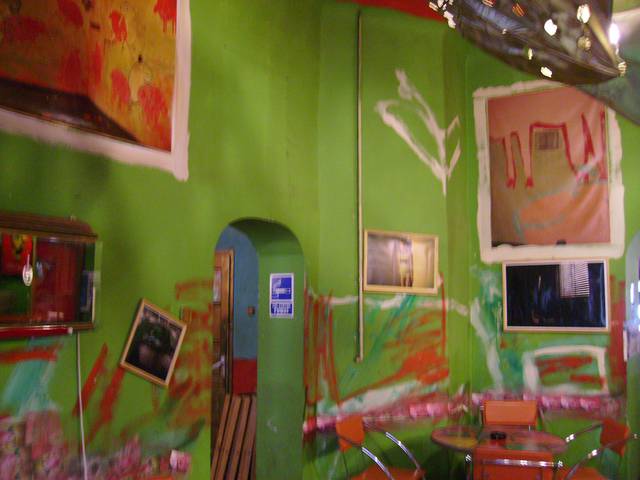
Cluj has a vibrant night life, guaranteed by the over 60,000 university students living here. There are bars, cafés, clubs for all preferences and budgets.
- Bulgakov. They have nice Hungarian food.
- Casa TIFF.
- Coffee O'Clock.
- Corvinus - Str. Memorandumului - A pub popular with the Hungarian community.
- Diesel, Piața Unirii no. 17, +40 264 598441. One of the oldest and most expensive clubs in Cluj-Napoca. Cosmopolitan events on three floors with some of the most popular groups in Romania.
- Euphoria Biergarten.
- Flowers Tea House, Str. Emil Isac nr. 11.
- Flying Circus Club. Mostly rock music. Every night they are open they broadcast a movie around 20:00. Entrance is free including popcorn.
- Insomnia. Bohemian and ever-changing decor and nice personnel. Also serve light meals.
- Janis la stuf, 19, Piata Unirii, +40 736365807. Bar and club. Open every day until very late. Special discounts: From 21:00-22:30 unlimited beer for 7 lei (8 lei on Friday and Saturday). Sometimes free shots for students.
- Kharma, +40 722 365342. Piaţa Păcii nr. 1-3. Nice decor and good DJs.
- Koffer Books & Coffee.
- The Jack Pub. The smallest pub from the town.
- L'Atelier, Str. Memorandumului, 1st floor. Also known colloquially as the cardboard place. A relaxed café-bar with furniture made from cardboard and scrap materials. Music ranges from jazz to alternative rock.
- La Gazette. A place to meet students and to get to know new music, especially electronica.
- Molotov Pub, Str. Virgil Fulicea nr. 13, +40 756 393785. A popular place in a medieval house, in the historical center, close to Matei Corvin House. They have a very good coffee and tea specialties, and the famous, personal, recipe of the 'Molotov Cocktail'. Bohemian and challenging decoration.
- Mozart Cafe.
- Old School.
- Oscar - A good after-hours haunt.
- Qui One Quint tea room, Str. Cișmigiu nr. 1 (look for the subtle sign on the building, go to the basement. Well hidden tea house, decorated with vintage furniture.
- Stone, Str. Gheorghe Fulicea nr. 17, +40 264 408167.
- Papillon.
- Samsara Chill-Out & Tea House. Samsara is a place to relax. They serve different kinds of tea and wine in a relaxing atmosphere. There are 3 rooms with different styles. The place is very busy in the evening, so make a reservation or come early.
- Sisters Cafe.
- The Shelter.
- The Soviet, Strada Clemenceau Nr. 2 (Close to Piata Muzeului, +40 749902484. M-F 10:00-02:00, Sa Su 12:00-02:00. Bar in Soviet style. Has a nice cocktail menu.
- Umbra de Noapte, str. Georges Clemenceau 7. It's a place where you can meet with friends or relax and read dark literature or international magazines. Enjoy varieties of coffee and tea specialties, soft drinks, beer, wine, spirits; Romania's largest variety of absinthe; nonalcoholic, alcoholic and absinthe-cocktails as well as season-specials like iced coffee and fresh ice tea in summer or spiced wine and spiced coffee in winter. Dimly-lit atmosphere; listening to dark music (mainly Gothic, Darkwave, EBM, Industrial, Horrorpunk, Gothabilly, Medieval).
- Yolka.
- Zorki Photo Cafe, Str. Ion Rațiu nr. 10. Cafe-bar with jazz & alternative rock music. Regular photo exhibitions. Sometimes small, acoustic concerts.
- Zorki Off the Record is located in the basement under Zorki. Where concerts sometimes happen. You can grab a beer or a glass of wine.
Bulgakov. They have nice Hungarian food.
Casa TIFF.
Coffee O'Clock.
Corvinus - Str. Memorandumului - A pub popular with the Hungarian community.
Diesel, Piața Unirii no. 17, +40 264 598441. One of the oldest and most expensive clubs in Cluj-Napoca. Cosmopolitan events on three floors with some of the most popular groups in Romania.
Euphoria Biergarten.
Flowers Tea House, Str. Emil Isac nr. 11.
Flying Circus Club. Mostly rock music. Every night they are open they broadcast a movie around 20:00. Entrance is free including popcorn.
Insomnia. Bohemian and ever-changing decor and nice personnel. Also serve light meals.
Janis la stuf, 19, Piata Unirii, +40 736365807. Bar and club. Open every day until very late. Special discounts: From 21:00-22:30 unlimited beer for 7 lei (8 lei on Friday and Saturday). Sometimes free shots for students.
Kharma, +40 722 365342. Piaţa Păcii nr. 1-3. Nice decor and good DJs.
Koffer Books & Coffee.
The Jack Pub. The smallest pub from the town.
L'Atelier, Str. Memorandumului, 1st floor. Also known colloquially as the cardboard place. A relaxed café-bar with furniture made from cardboard and scrap materials. Music ranges from jazz to alternative rock.
La Gazette. A place to meet students and to get to know new music, especially electronica.
Molotov Pub, Str. Virgil Fulicea nr. 13, +40 756 393785. A popular place in a medieval house, in the historical center, close to Matei Corvin House. They have a very good coffee and tea specialties, and the famous, personal, recipe of the 'Molotov Cocktail'. Bohemian and challenging decoration.
Mozart Cafe.
Old School.
Oscar - A good after-hours haunt.
Qui One Quint tea room, Str. Cișmigiu nr. 1 (look for the subtle sign on the building, go to the basement. Well hidden tea house, decorated with vintage furniture.
Stone, Str. Gheorghe Fulicea nr. 17, +40 264 408167.
Papillon.
Samsara Chill-Out & Tea House. Samsara is a place to relax. They serve different kinds of tea and wine in a relaxing atmosphere. There are 3 rooms with different styles. The place is very busy in the evening, so make a reservation or come early.
Sisters Cafe.
The Shelter.
The Soviet, Strada Clemenceau Nr. 2 (Close to Piata Muzeului, +40 749902484. M-F 10:00-02:00, Sa Su 12:00-02:00. Bar in Soviet style. Has a nice cocktail menu.
Umbra de Noapte, str. Georges Clemenceau 7. It's a place where you can meet with friends or relax and read dark literature or international magazines. Enjoy varieties of coffee and tea specialties, soft drinks, beer, wine, spirits; Romania's largest variety of absinthe; nonalcoholic, alcoholic and absinthe-cocktails as well as season-specials like iced coffee and fresh ice tea in summer or spiced wine and spiced coffee in winter. Dimly-lit atmosphere; listening to dark music (mainly Gothic, Darkwave, EBM, Industrial, Horrorpunk, Gothabilly, Medieval).
Yolka.
Zorki Photo Cafe, Str. Ion Rațiu nr. 10. Cafe-bar with jazz & alternative rock music. Regular photo exhibitions. Sometimes small, acoustic concerts.
Zorki Off the Record is located in the basement under Zorki. Where concerts sometimes happen. You can grab a beer or a glass of wine.
Cluj-Napoca is in general a safe city. Even after dark, it is safe to walk through the city center and some of the other neighbourhoods. To be on the safe side, unless you know exactly where you're going and how to get there, suburbs should be avoided at night, especially the neighbourhoods of Manastur, Marasti, and Iris, and the train and inter-city bus station areas.
You should, as always, take care of your belongings and pockets. If your wallet is stolen or lost, it is likely that it will resurface after a while, but without the money and credit cards (so be sure to call your credit card company and lock the credit card as soon as you notice it's missing).
As throughout the rest of the European Union, the police, ambulance, and fire department are reachable at the number 112.
- Brașov. There is only a daily bus to Brasov early in the morning 06:30 that leaves from Autogare North (at the other side of the bridge next to the train station). Another option is to get a minibus (at 11:30, 14:45 first one) from same Autogare to Târgu-Mureș (20 lei) and take another minibus there to Brașov (at 14:20 and 16:20).
- Turda. City 40 minutes away in a bus famous for its world class mine and a gorge nearby
